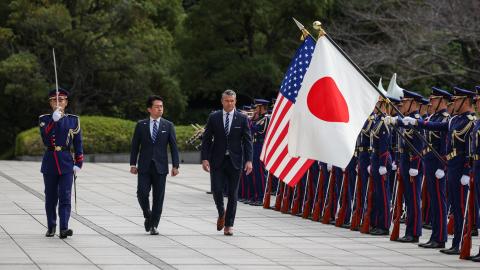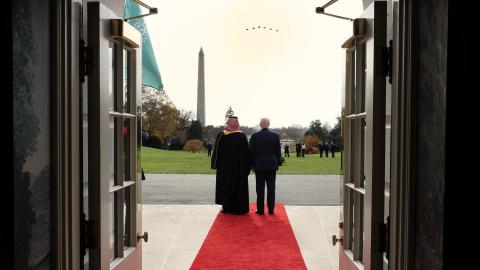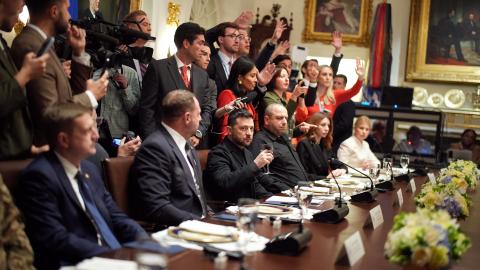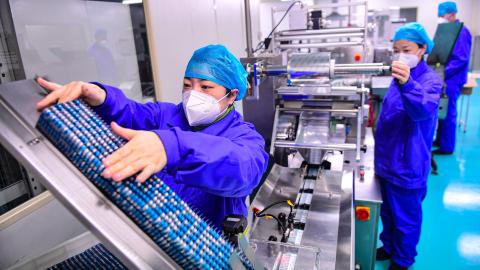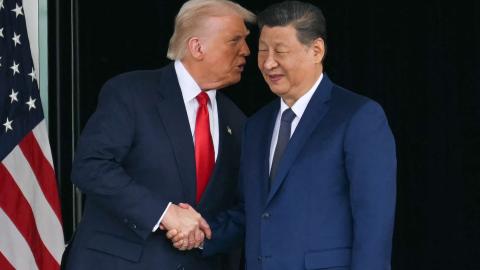What to make of American foreign policy in the age of Donald Trump? From welcoming Anthony Albanese warmly in Washington to a jovial jaunt through Malaysia and South Korea, and then an ostensibly friendly meeting with China’s Xi Jinping, Trump has been focused, charming and gracious.
Is Trumpian strategy and diplomacy less radical and disruptive than both his supporters and detractors believe? No. It is not back to business as usual because America’s role and place in the world has changed, and will continue to do so. The past couple of weeks is more about Trump getting what he needed from allies in the lead-up to Thursday’s meeting with Xi.
Trump is neither a China hawk nor a dove in the conventional sense. He understands the importance to America of an autonomous Taiwan and is not planning to trade it away, as some fear. But he’s not a hawk because he doesn’t envisage America being in a winner-takes-all geopolitical and ideological contest with China.
However, Trump sees international politics as an unavoidable military and commercial competition between nations. Just as he’s not sentimental about alliances, he holds no special animosity towards the Chinese Communist Party or its authoritarian practices. But China’s is the only military and economy big and powerful enough to surpass America in this contest and cause the US significant pain.
Trump assumes China sees America in the same way. To win, Beijing resorts to cheating. Take the subsidies it deploys to put foreign firms out of business, or systematic intellectual property theft. Trump directs his anger not at Xi but previous US administrations for allowing China to pay few costs and get away with it.
This leads to Trump’s approach to foreign affairs. He believes there is no distinctive or sui generis concept of statecraft. What brought him success in the business world are the same principles that will bring him success in the political and international world. The very same principles of commercial negotiation, coercion, use of leverage, psychological manipulation and opportunism apply to all human activity. It’s why Trump treats seeking peace in Gaza or Ukraine as too important to be left to professional diplomats whom he sees as focused more on process than outcomes.
Now consider the part about strategic sequencing. The grace and the charm offered to Australia, Southeast Asian nations, Japan and South Korea was given with an eye to the meeting with China. Notice Trump did not choose to raise his dissatisfaction about inadequate defence spending by Asian allies over the past few weeks despite it being a persistent theme for much of the year.
So why leave that for a future time? Because he needed to announce big deals with friendly nations prior to meeting Xi, and for domestic political reasons. He boasts that he’s rewriting the rules and practices of trade not to be a vandal but to put Americans, and America’s economy, in a better position in the context of the global material contest. The model is bilateral agreements that favour America and are a testament to his self-proclaimed deal-making prowess. If he comes away without big deals from the current Asian summit season, he’ll be seen to be tampering with the existing system for no better gain or outcome.
This brings us to China. Trump’s overarching objective is American material primacy. This is why the President is obsessed with reindustrialisation, which he believes tariffs will deliver. If America continues to lose manufacturing capability, it becomes weaker and more vulnerable during difficult times in peace or war – a lesson Trump learnt during the pandemic.
Meanwhile, foreign policy is about making better deals for America, which is why he wants greater leverage and coercive power against all nations – and against China most of all. This partly explains the timing of Trump announcing the immediate start of nuclear weapons testing just before the meeting with Xi.
This also gives context to why Albanese is in the good books for now. Beijing recently introduced a regulation for Chinese firms to seek permission to export products that contain as little as 0.1 per cent of many rare earths. The export licensing regime will be selectively weaponised against American military and commercial firms, and sectors, for leverage.
Back in April, when the Liberation Day Tariffs were announced, Trump had to subsequently back down against China because Beijing threatened to withhold rare earth exports. Major American manufacturing firms were privately warning the administration they would have to halt their assembly lines in a matter of weeks.
It explains why Trump was so eager to announce critical mineral deals with Australia, Malaysia and Japan prior to meeting Xi. These deals will not lead to alternative sources of critical minerals for some time. But Trump needed them to minimise Chinese leverage and increase his own for the current round of negotiations.
Reduced tariffs on China and increased American exports of soybeans in return for China slowing the flow of chemicals used to make fentanyl and easing of rare earth export restrictions to the US is hardly game-changing.
There will be no final or permanent deal between the US and China. Even putting to one side the ideological disagreements – which Xi takes seriously, and Trump ought to as well – both believe the material contest is ceaseless. It is all about seeking relative gains. The quid pro quo for allies is that they do more to advance American material primacy or risk losing US protection. Big asks are coming, including for Australia.
